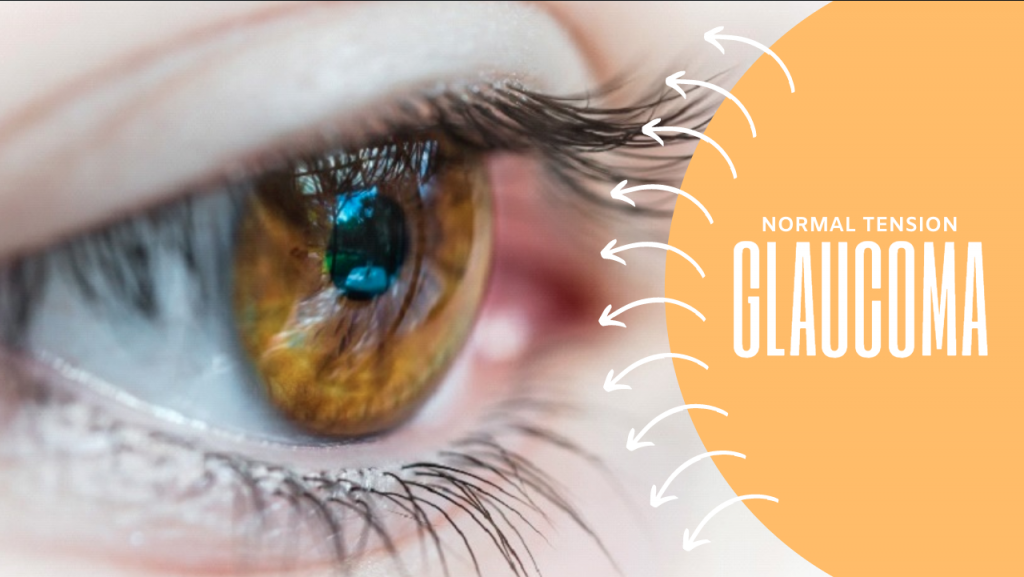The diagnosis of glaucoma can be straight forward when intraocular pressure is elevated, however, the diagnosis is more elusive in patients with statistically normal pressures. Glaucoma is defined by a characteristic optic disc cupping with thinning of the retinal nerve fiber layer and, as it becomes more advanced, a typical pattern of visual field loss. Most glaucoma patients also have an elevated eye pressure, defined as 22 mmHg or higher. However, up to 1/3 of patients with glaucoma can have normal eye pressures. In these patients, certain elements of the history and examination can help differentiate Normal Tension Glaucoma (NTG) from other entities.
One of the most common diseases confused for NTG is simply Primary Open Angle Glaucoma (POAG). The patient may just happen to be in the office for a pressure check when the pressure is not elevated. POAG can be differentiated from NTG by performing a diurnal curve measurement of pressure. By measuring the pressure multiple times throughout the day, you are more likely to catch the pressure when it is elevated. Because it is often not practical to keep the patient in the office all day for a diurnal curve, another option is to schedule patient follow-ups at different times of day. Pressure measurements can also be falsely low in patients with thin corneas. For this reason, pachymetry is an important part of the glaucoma evaluation. Looking for causes of previously elevated intraocular pressure by asking the patient about steroid use and examining the patient for signs of past uveitis and “burnt-out” pigmentary dispersion syndrome is also important.
There are several finding that can point toward NTG on exam. These patients more commonly have peripapillary atrophy and disc hemorrhages, compared with their POAG counterparts. They are also more likely to have focal “notching” of the optic nerve, and visual field defects close to fixation earlier in the disease.
A factor thought to be contributing to some cases of NTG is ischemia of the optic nerve. Patients can be asked about a history of migraines and Raynaud’s phenomenon to find out if vasospastic ischemia is likely. Questions about sleep apnea and taking antihypertensive medication at bedtime may help in discovering causes for non-vasospastic ischemia. If a patient has had major blood loss, or septic shock in the past, they could have a non-progressive visual field defect due to past ischemia that could mimic NTG.
Testing that could be useful includes an ANA looking for autoimmune disorders, a CBC with platelets to evaluate for anemia and blood dyscrasias that could contribute to optic nerve ischemia, and a VDRL as syphilis can mimic NTG. It is also important to recognize the signs that could warrant neuroimaging to look for a compressive lesion of the optic nerve. These include age under 50, rapid progression, optic disc pallor out of proportion to the amount of cupping, decreased visual acuity relative to the amount of cupping and visual field loss, decreased color vision, visual field defects respecting the vertical midline, and marked asymmetry of the nerves.
Once NTG has been diagnosed, the treatment is the same as for POAG, lowering the pressure. The Collaborative NTG Study showed that a 30% reduction of intraocular pressure decreased the rate of progression of NTG from 35% to 12%. Once this reduction is achieved, visits are scheduled every 3-4 months to measure intraocular pressure and look for progression. Risk factors for progression include migraines, disc hemorrhages, and female sex. If patients continue to progress after a 30% reduction in pressure, treatments can include further reducing IOP, adjusting nocturnal hypertensive medications to avoid a potential night time drop in blood pressure causing decreased optic nerve perfusion, calcium channel blockers in patients with vasospastic symptoms, and a sleep study to rule out sleep apnea. Generally, patients with IOP of 12 and a normal corneal thickness should not progress, and if they do, it is advisable to reevaluate for other causes of visual field loss.

